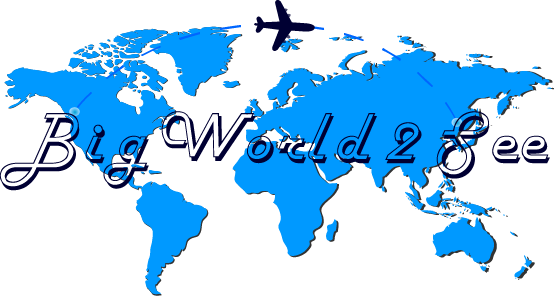We spent a week in Warsaw, Poland after taking a bus from Vilnius, Lithuania. The theme for the week was not just free walking tours, but was also free museums. An online search taught us that most museums had one day each week that was free. We are not big museum people but when it is free we are a little more willing to spend a bit of time in a museum.


The story of Warsaw, and really all of Poland, is quite sad. In particular, Warsaw was the front line during World War II. More about that a little later. Warsaw was just a small settlement on the Vistula River from the 10th to the 14th century. In the 16th century, Warsaw became the capital of the Commonwealth of Poland and Lithuania. In the late 18th century it was taken by Prussia and then in 1815 it was given to Russia.

During World War I, the Germans captured Warsaw (1915) however, in 1918 Poland re-declared its independence with Warsaw as its capital. In 1920, Poland fought the Battle of Warsaw against communist Russia and maintained its independence until 1939 that is.

At the beginning of WWII, September 1939, Germany invaded Poland and bombed Warsaw. They captured it on September 27, 1939. About a third of the population of Warsaw was Jewish (approximately 380 000 people). Starting in October 1940, the Germans moved Jews into Jewish ghettos forbidding them from leaving and barely giving them enough food to survive. In 1942, they began taking the Jewish people from the ghettos to concentration camps. In April 1943, the remaining Jews in the ghettos began to fight back. The Germans were much better armed and crushed the Jews.


In August 1944, the people of Warsaw began the Warsaw Uprising. Operation Tempest was a nationwide effort to get Germany out of Warsaw. The Allies did air drops of supplies to the Poles. However, Stalin refused to allow them to land in Russian territories and so many of their drops were unsuccessful. Stalin stood by and did nothing to help the people of Warsaw. About 16000 members of the Polish Resistance were killed and between 150,000 and 200,000 civilians were executed. Hitler ordered the complete levelling of the city of Warsaw. Through all of WWII, about 85% of Warsaw was destroyed.
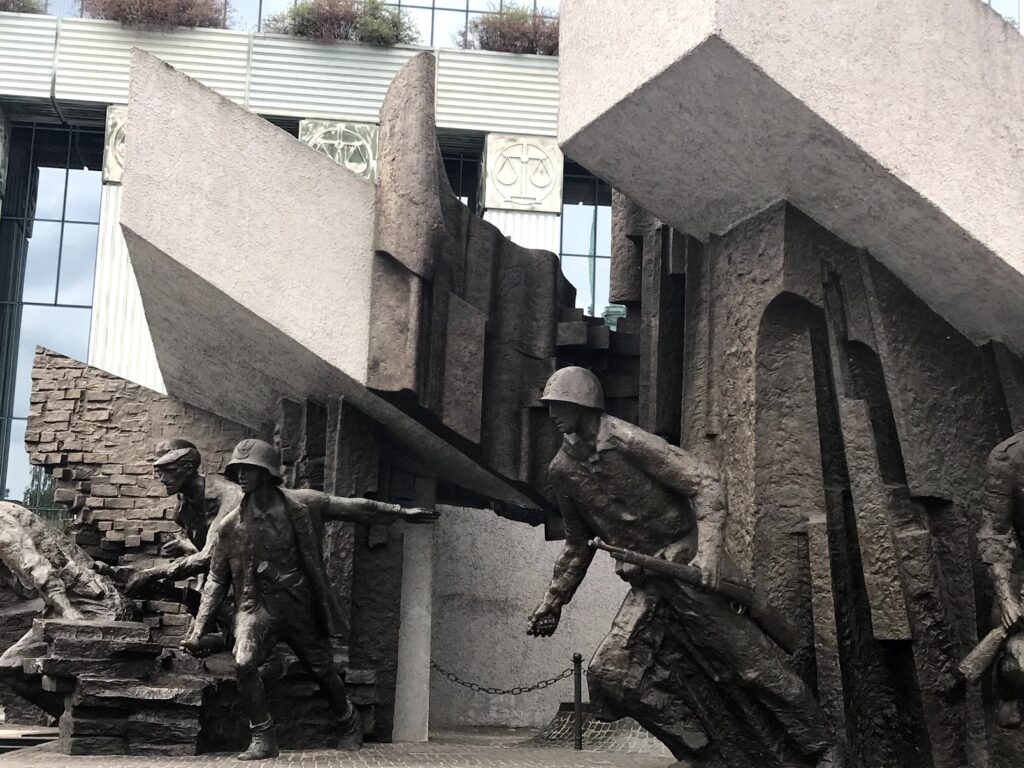

At the end of World War II, Russia captured Warsaw and declared the Polish Peoples Republic. The Soviet puppet regime undertook the reconstruction of much of the city with its communist style. In the early 1980s, in response to rising protests to the communist rule, the government imposed martial law for an 18 month period. In 1989, the Solidarity party took most of the seats in the government and Lech Walesa became President. This was the start of big changes.



Today Warsaw is a thriving capital city with a population of 1.7 million. After WWII, as most of the population of the city had been killed, new people moved in to rebuild it.
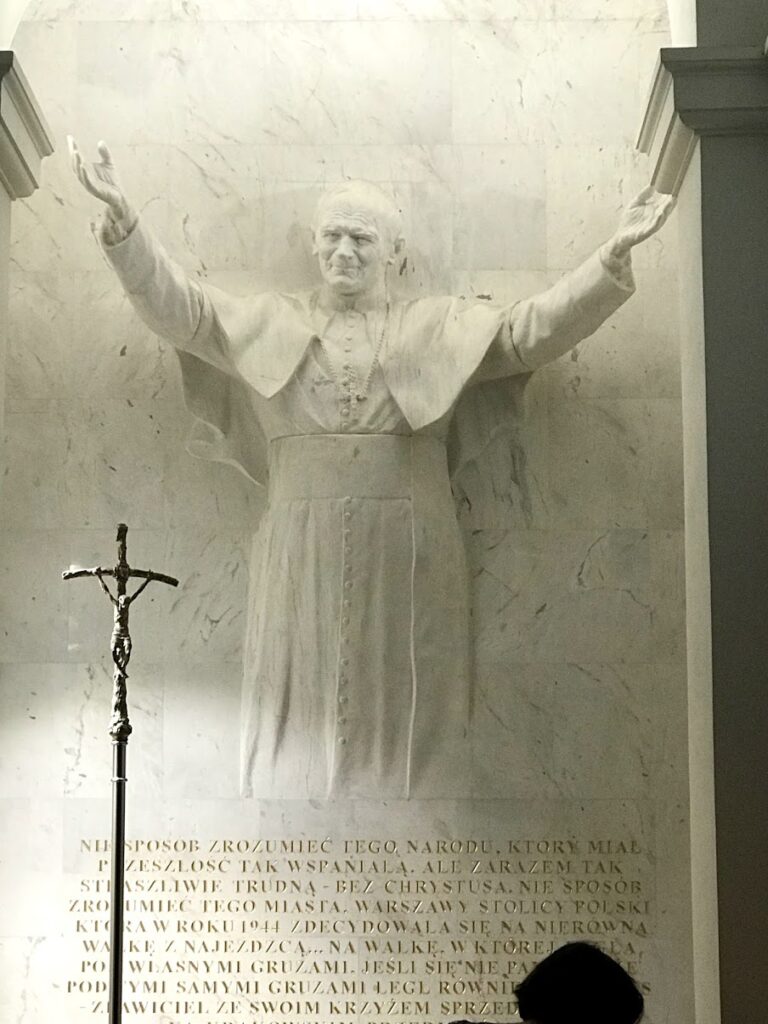
We did an Old Town free walking tour on our first full day in Warsaw. Much of Old Town was rebuilt to look like it had before war destroyed it. The tour took us to the Royal Castle which was mostly rebuilt. Poland had a different kind of aristocracy than I had ever heard of. When the king died, the nobility gathered to elect a new king. The king could be from anywhere and any country. In fact, the king was a title so there were actually a couple of female kings. The castle in Warsaw was built by a Swede who became the king of Poland, Sigismund III. He was the King of Poland, Grand Duke of Lithuania and monarch of the Polish-Lithuanian Commonwealth from 1587 to 1632. He was also the King of Sweden from 1592 to 1599. The Swedes forced him to give up his rule in Sweden when he refused to give up his rule of Poland.

On the tour we also got to the memorial for the Warsaw Ghetto Uprising and the memorial for the Jewish Ghetto. We also saw the Barbican, Zygmunts Column and the Main Market Square. The photos below are from the Old Town Tour.

The next day we knew that admission to the Royal Castle was free (Wednesdays). We had been in the courtyard on the free walking tour the day before but did not enter. The castle is filled with art, furniture, and antiquities from its past.


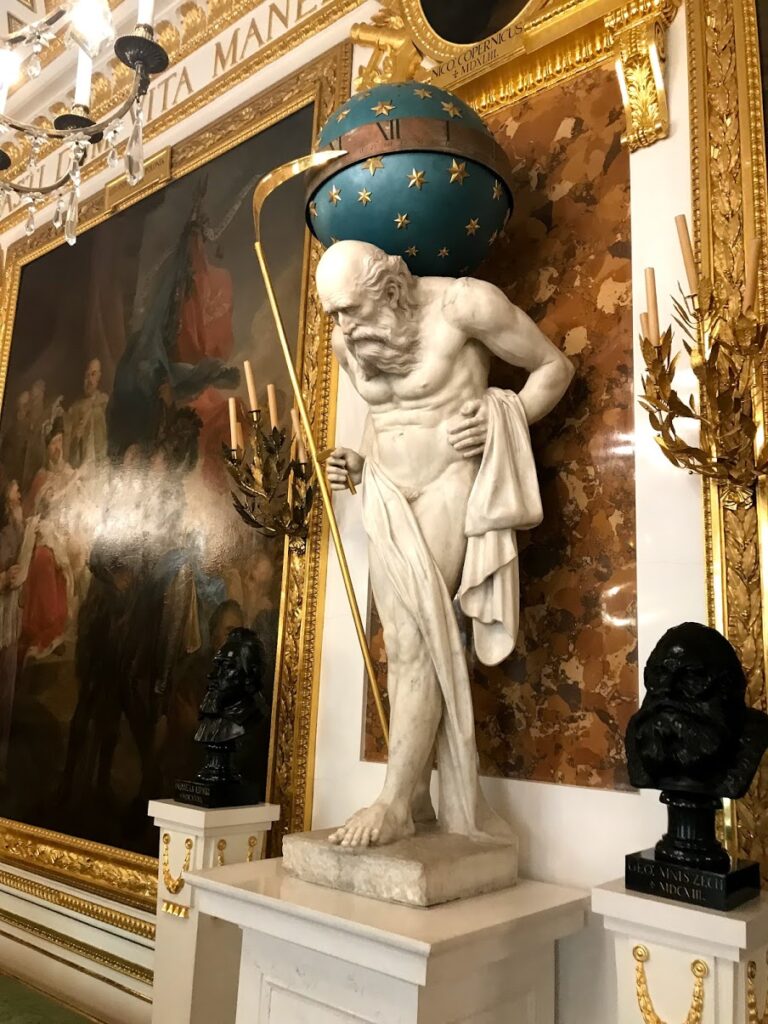
On the way to the Royal Castle we stopped at the University of Warsaw library. It has a roof top garden that is pretty cool.

The following day we went to Wilanow Palace. It is the museum of King Jan IIIs palace at Wilanow. It has free admission on Thursdays. This also included the Palace gardens. We wandered around them for quite some time but it was about 32 degrees C so I was pretty cooked.

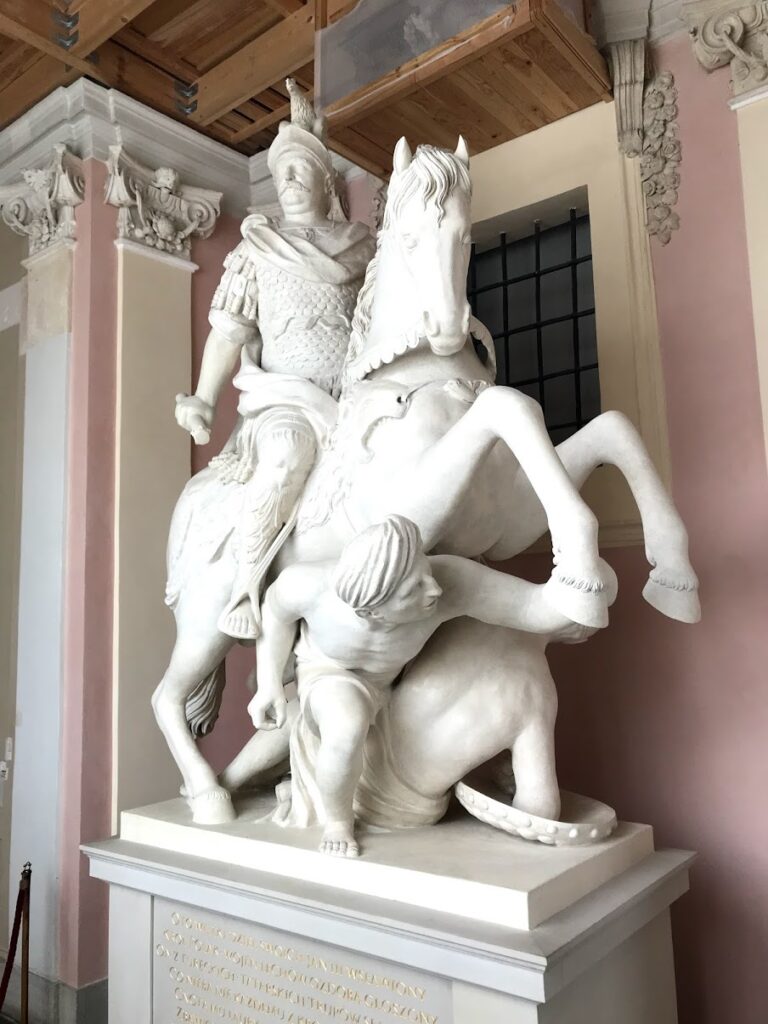
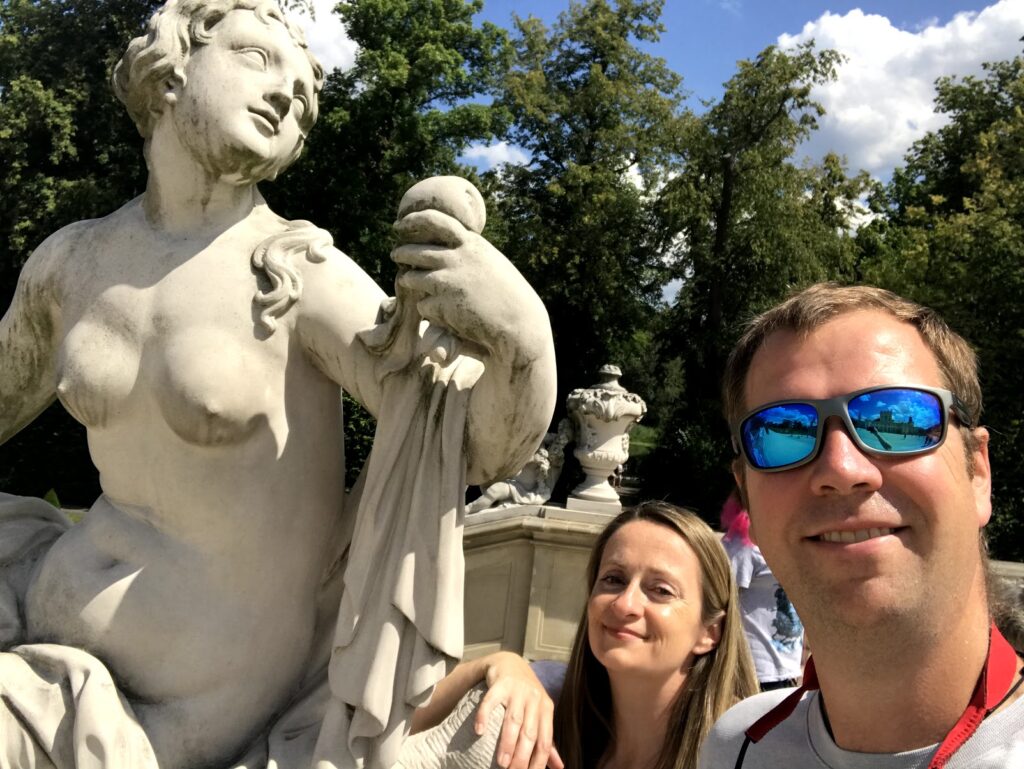
From there we went to the Warsaw Rising Museum. It was also free today. It was a very interactive museum that was more about helping you understand the experience. It was very well done but you probably need about four hours to do it thoroughly.

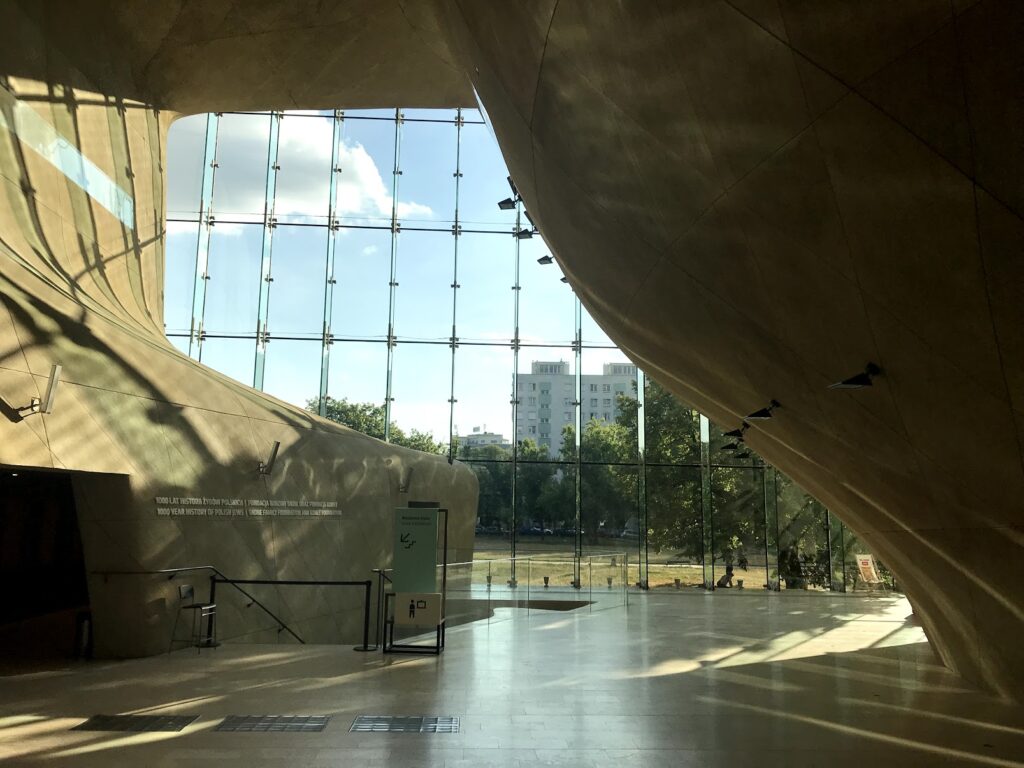

The next morning we did the Free Alternative Walking Tour again with the company called Walkative. Our guide was Patricia (I am sure spelled differently). We started from St. Florians Cathedral in the area called Praga. During the Old Town tour, our guide suggested that some people feel like Praga is unsafe. It is true that there are areas that are a little less safe, but this is actually an up and coming area. In a couple of years, I would not be totally surprised to learn that it is an upscale neighbourhood.

Perhaps the most exciting thing about this tour was the Zoo. Have you seen the movie The Zookeepers Wife? After the tour, Nic and I watched it on Netflix. The story is about the zookeeper and his wife in Warsaw. During the bombings of Warsaw, most of the zoo animals were killed. Under Nazi occupation, they recommended that they be able to raise pigs in the zoo. The pigs would be food for the soldiers and they would feed the pigs with the garbage collected from the Jewish ghettos. They used this as a way to smuggle Jewish people out of the ghetto and hid them in their basement. They were able to get hundreds of Jews to safety during WWII. It is not because of the movie or the story that I found the zoo exciting. There is a bear enclosure right on the street and we were quite lucky that one of the bears was out and walking around. Have a look:


As we walked around Praga, we saw some very old rundown buildings as well as a very old market. Another neat thing we saw is some of the altars that people built in the courtyards of their housing tenements. People were not allowed to go out to churches so they built their own altars and held their own services. Poland is a very Catholic country.


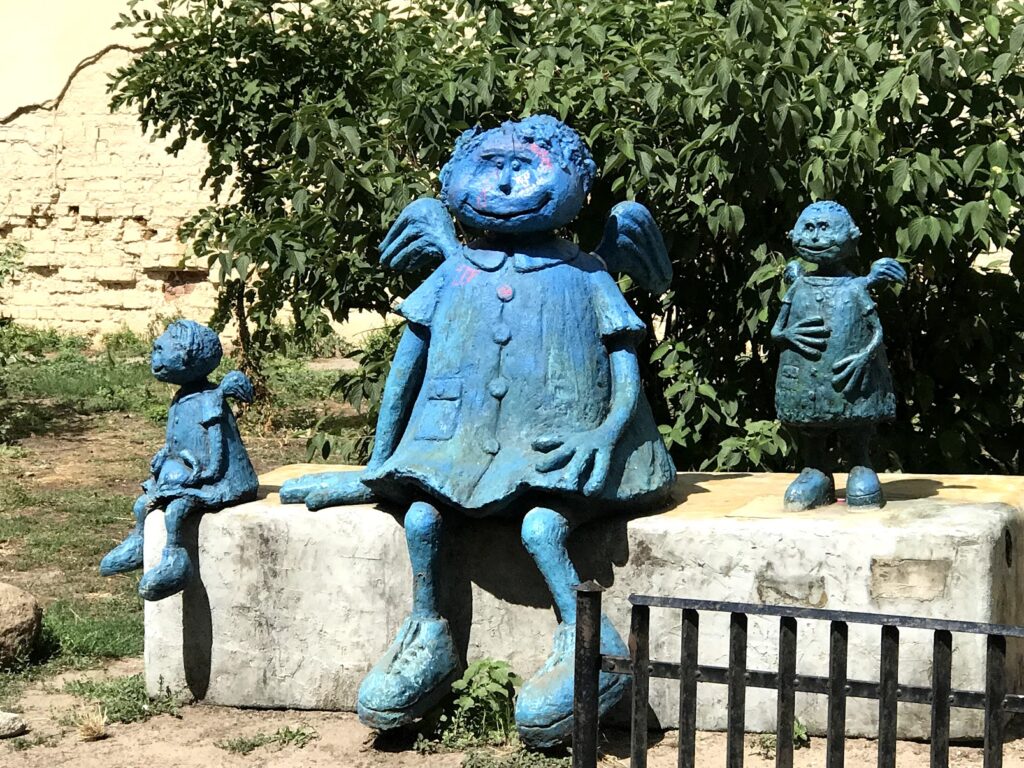
We learned about milk bars but did not go to one. You can get a full meal for about one or two euros. You go in, pick your food off the wall menu, and give your money to the cranky woman that owns the place. You then take your receipt to the first window. A few minutes after that you pick up your meal which typically includes soup, a main course and a drink. After you return your dishes to the window. These milk bars started up during communist times to provide a filling meal to the workers. The government still supports them to this day.

Saturday was a slow day. We did not emerge from our place until quite late in the afternoon. We planned to get a meal and then head to a water fountain laser show (kind of like at the Bellagio). By the time we got there they started the show and then cancelled it right away. It was starting to thunder and lighting and so the show was cancelled.


On Sunday, we went to the Polin Museum. It is the museum about the history of Polish Jews. It is free on Sundays. Once again it was an experiential museum. We did not expect it but we were there for about four hours only leaving once it closed. It was a cool museum but the content was pretty heavy. There is a video of an interview of a man who was a Belgian soldier during WWII. They were controlled by Austria and Germany in the war. Even though he was an engineer who was tasked with blowing up buildings for the Germans, he saw some terrible things. For example, he was preparing to blow up a school and the kids and teachers were racing out past him. The Nazis basically killed them all as they ran out of the school. Horrific.




On Monday we took a train to Krakow. I am sure I will have a lot more of this to tell.

